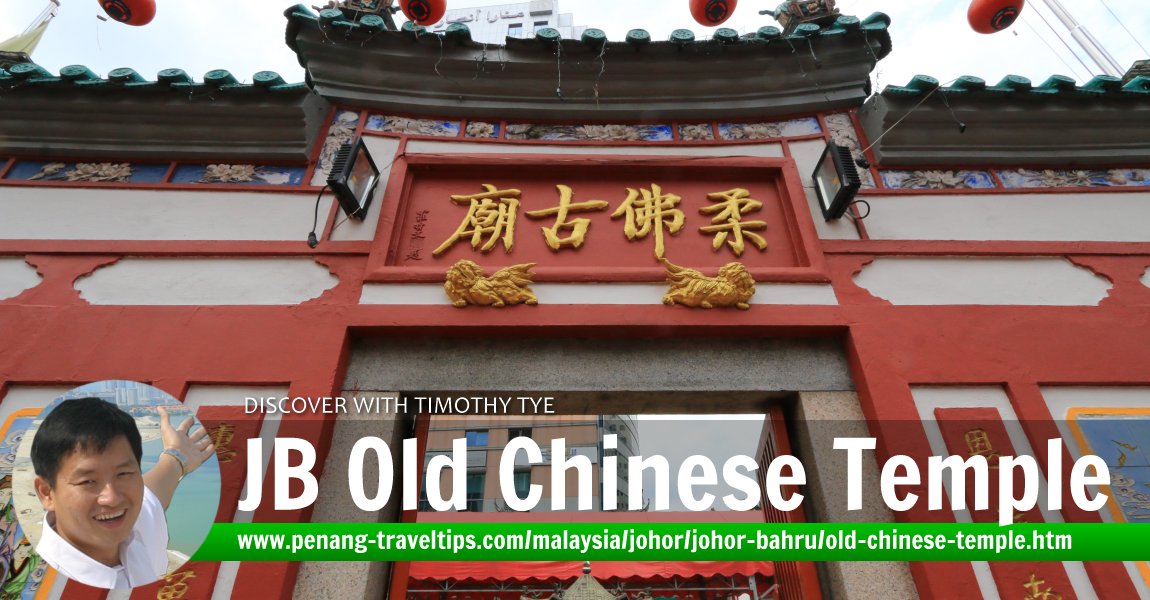 Johor Bahru Old Chinese Temple (14 September, 2016)
Johor Bahru Old Chinese Temple (14 September, 2016)
Johor Bahru Old Chinese Temple (GPS: 1.46055, 103.76313) is the most important Chinese temple in Johor Bahru. Despite its name in English, in Chinese its name 柔佛古庙 (Traditional Chinese: 柔佛古廟, Pinyin: Róufú Gǔ Miào) translates simply as the Johor Old Temple. That is often further shortened to simply 古庙/Gǔ Miào, meaning The Old Temple. So entrenched is it as the most important Chinese temple of the state that most locals will immediately be able to recognise which particular old temple is referred when that name is mentioned. It goes without saying that this is one of Johor Bahru's important heritage sites.
The Johor Bahru Old Chinese Temple dates back to the second half of the 19th century. The exact date of its founding is not certain, but it may have existed as early as 1870 or 1880. It is located on Jalan Trus, which has existed since the founding of the city, and is today part of the inner city of Johor Bahru. Where once the temple used to be the central focus of the village that surrounded it, today the temple is hemmed in on one side by The Puteri Pacific Hotel, and on the other side the Galleria @ Kotaraya shopping mall.
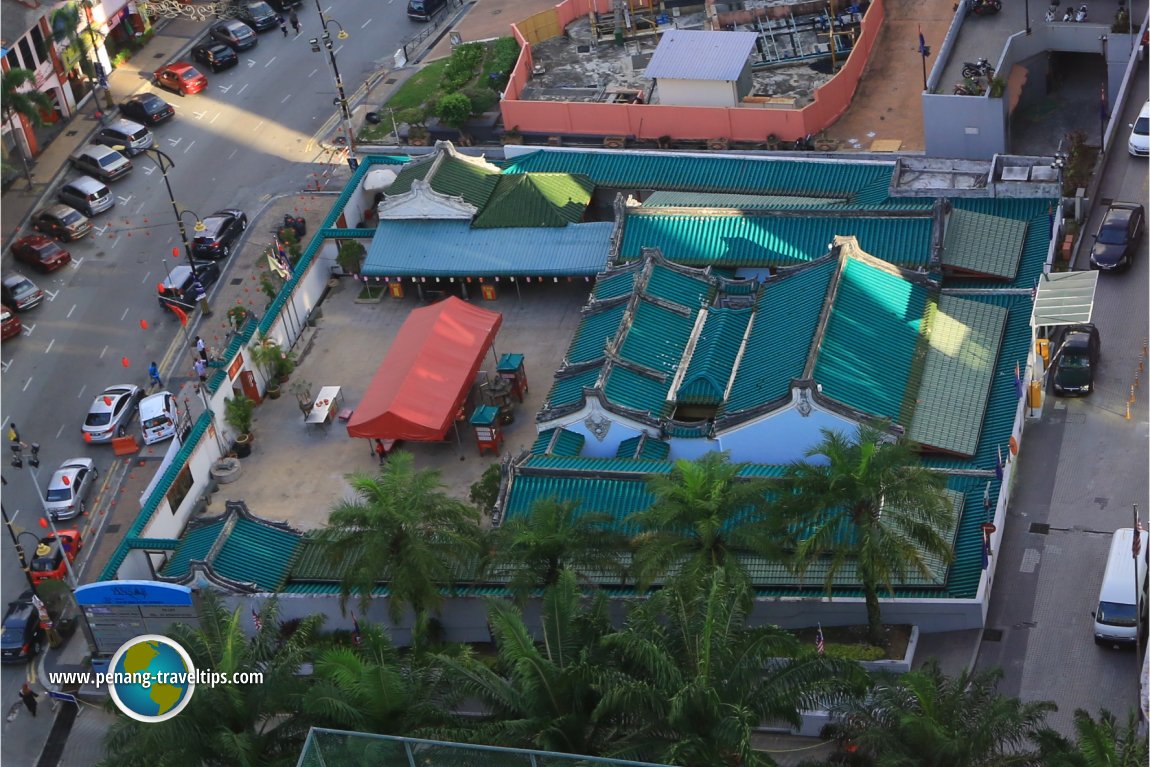 View of Johor Bahru Old Chinese Temple from The Puteri Pacific Hotel (14 September, 2016)
View of Johor Bahru Old Chinese Temple from The Puteri Pacific Hotel (14 September, 2016)
The person credited with founding the Old Chinese Temple was local community leader Tan Hiok Nee (aka Tan Yeok Nee), who was leader of the Ngee Heng Kongsi. Tan managed to band together the five main language groups of the settlement to chip in for the construction of the temple. As such, the Old Chinese Temple today is jointly a place of worship of the Teochew, Hokkien, Cantonese, Hakka and Hainese of Johor Bahru.
As with most Chinese temples, the Old Chinese Temple has a porch punctuated by a main door flanked on either sides by auxiliary entrances. The porch is supported by a pair of granite columns. This leads to the prayer hall, where altars to various deities are installed.
The main alcove of the Old Chinese Temple holds the image of the main deity, 元天上帝 (Yuán Tiān Shàngdì). This is flanked by smaller alcoves for auxiliary deities.
The Johor Bahru Old Chinese Temple has undergone several renovations, with a major one being carried out in 1995-96. Today the arcade cloistering the prayer hall has been renovated to form a museum providing interpretation of the temple history. The temple is a popular destination for Chinese students who often visit it to pray for good performance in examinations.
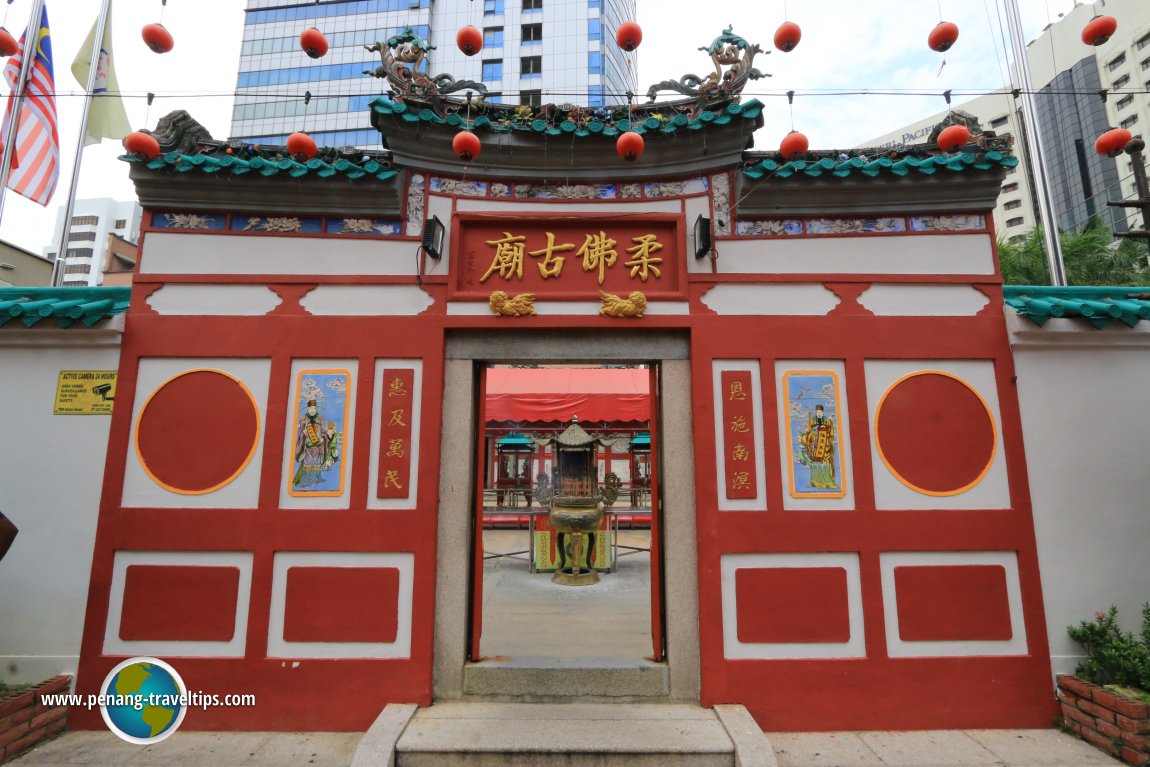 Another view of the main entrance of the Johor Bahru Old Chinese Temple (14 September, 2016)
Another view of the main entrance of the Johor Bahru Old Chinese Temple (14 September, 2016)
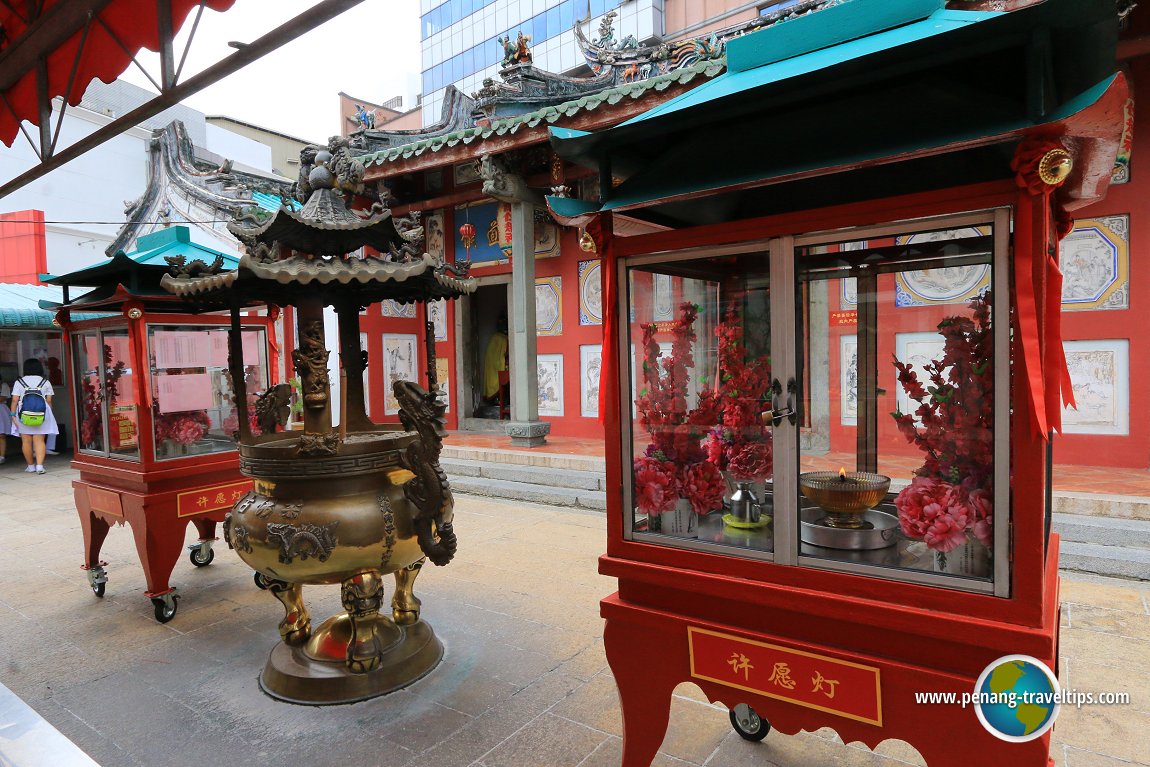 The incense burner in the front courtyard of Johor Bahru Old Chinese Temple (14 September, 2016)
The incense burner in the front courtyard of Johor Bahru Old Chinese Temple (14 September, 2016)
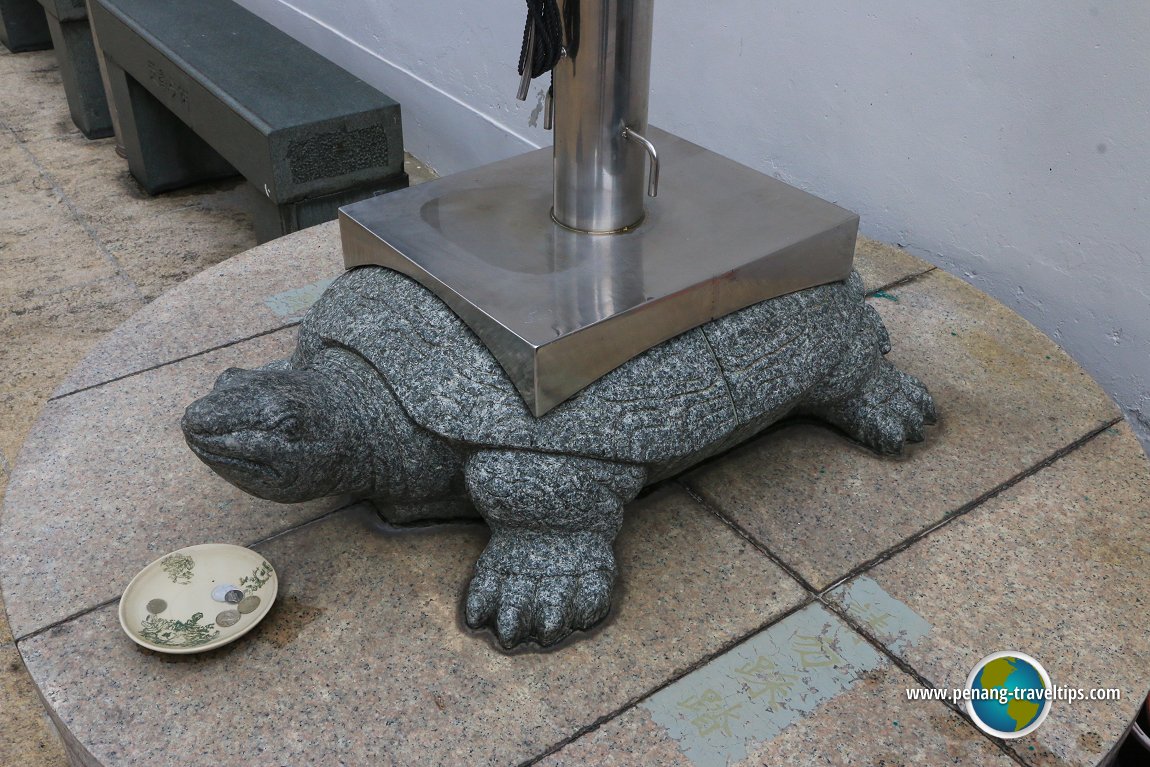 The temple flagpole stands on the base of an auspicious granite tortoise (14 September, 2016)
The temple flagpole stands on the base of an auspicious granite tortoise (14 September, 2016)
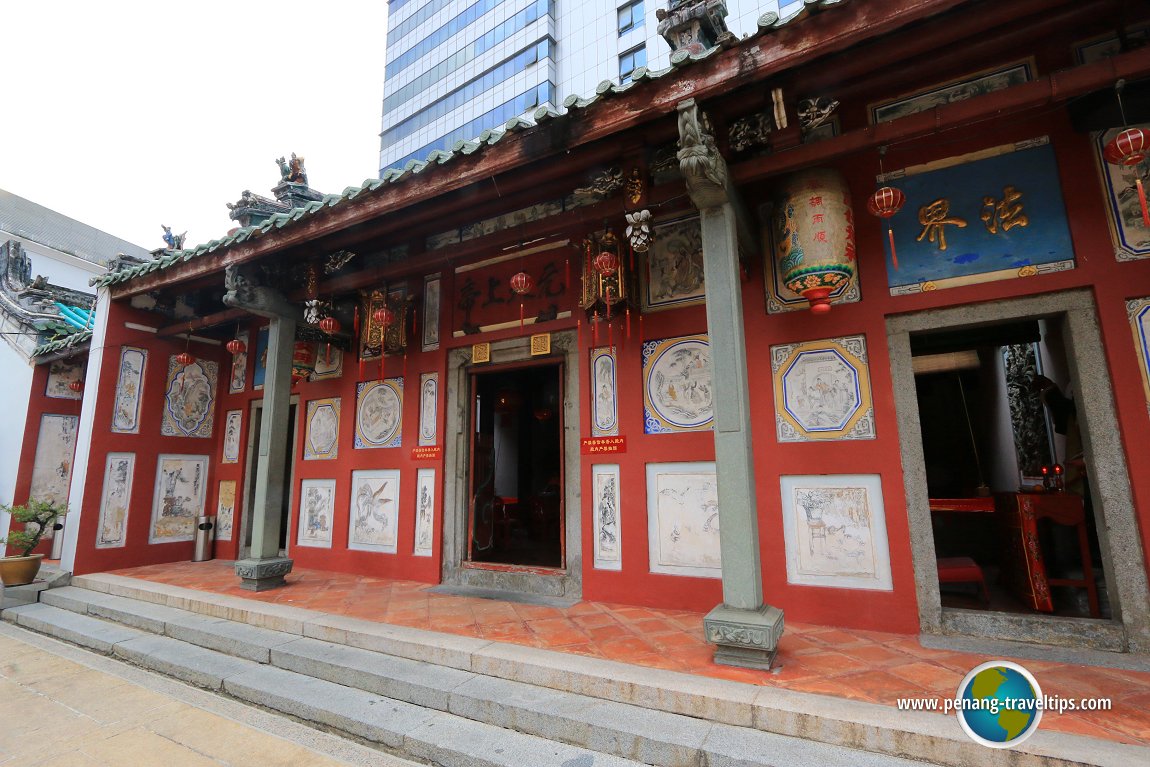 Entrance porch of Johor Bahru Old Chinese Temple (14 September, 2016)
Entrance porch of Johor Bahru Old Chinese Temple (14 September, 2016)
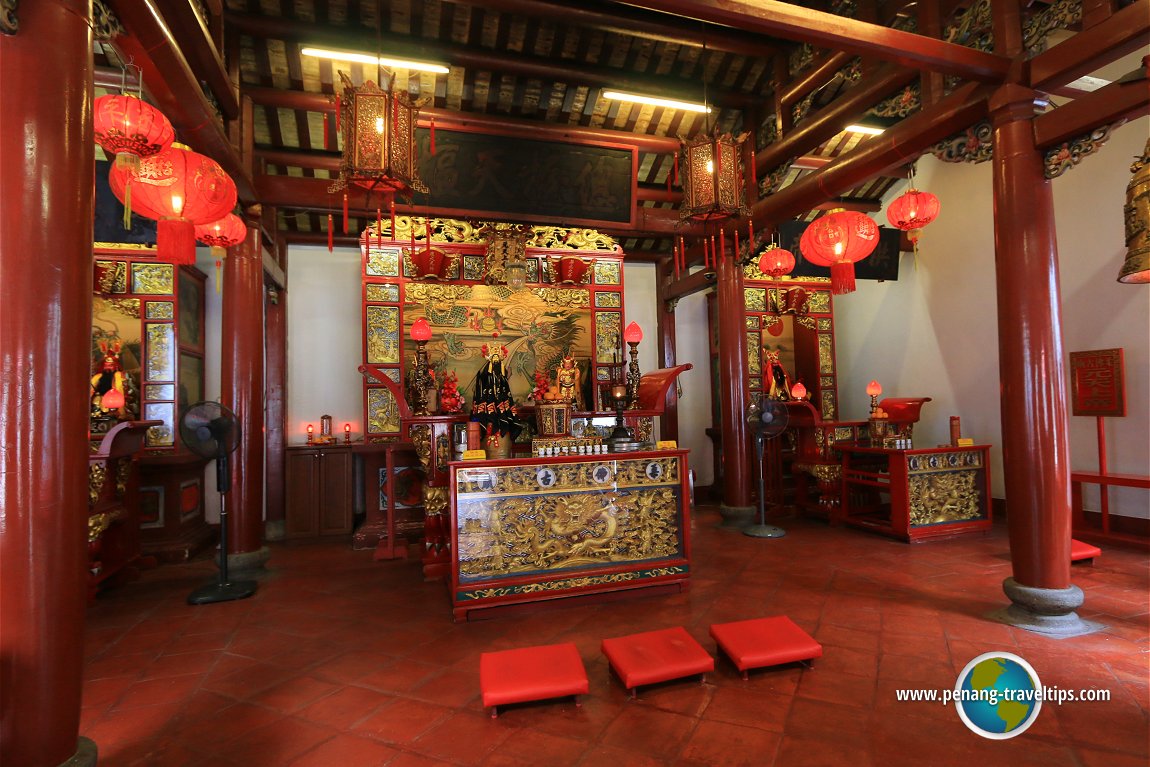 Prayer hall of the Johor Bahru Old Chinese Temple. (14 September, 2016)
Prayer hall of the Johor Bahru Old Chinese Temple. (14 September, 2016)
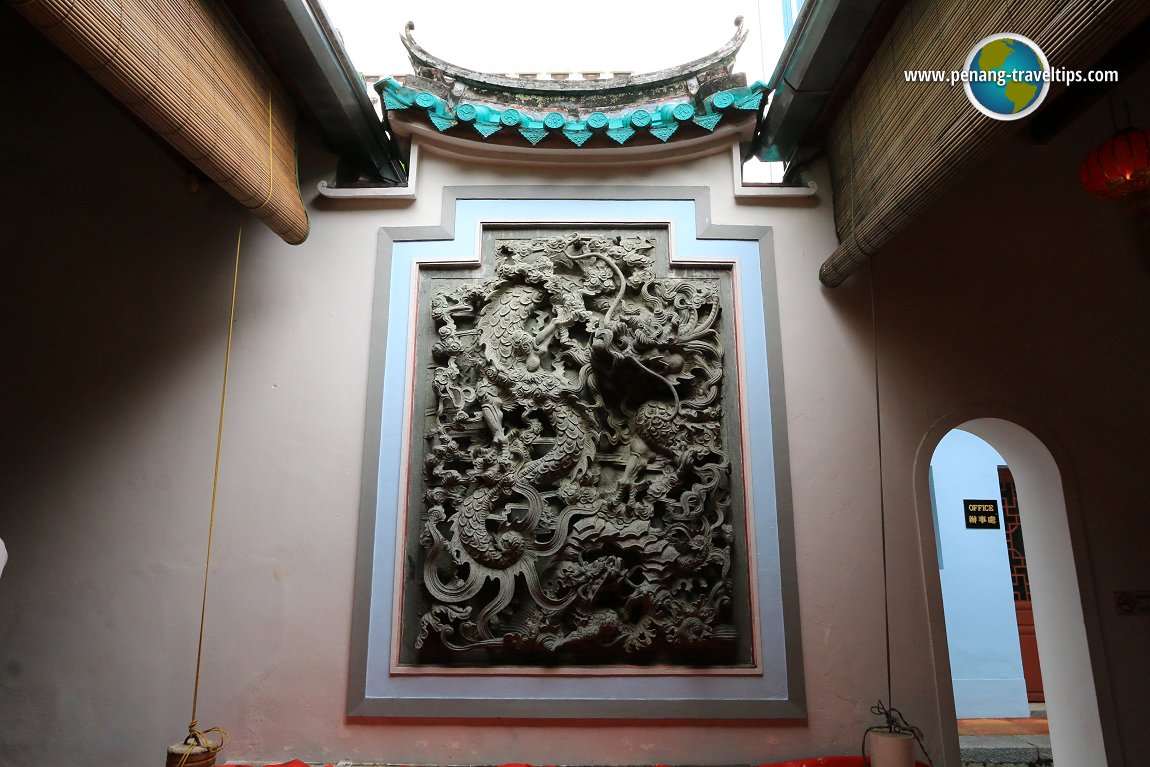 The dragon haute-relief on the wall of The Old Chinese Temple (14 September, 2016)
The dragon haute-relief on the wall of The Old Chinese Temple (14 September, 2016)
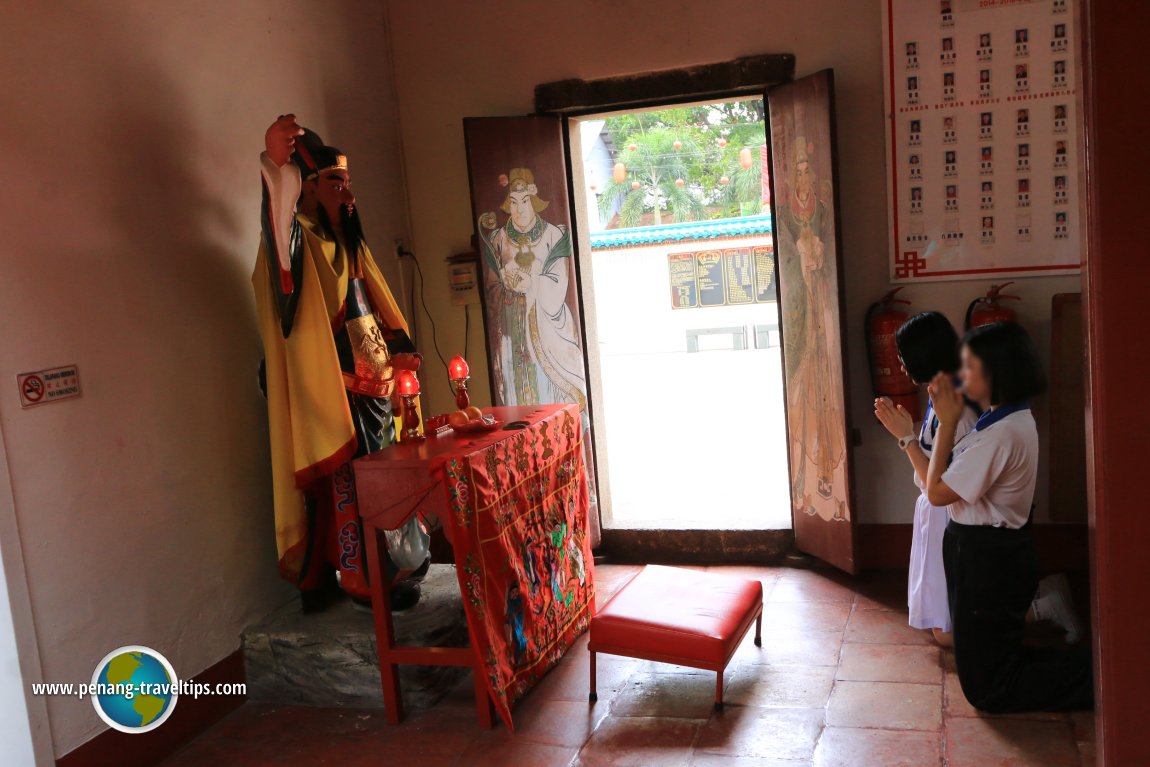 The Old Chinese Temple is often visited by students who come to pray for good exam performance. (14 September, 2016)
The Old Chinese Temple is often visited by students who come to pray for good exam performance. (14 September, 2016)
360° View of Johor Bahru Old Chinese Temple on Google Maps Street View
Johor Bahru Old Chinese TempleJohor Bahru Old Chinese Temple is  on the Map of Johor Bahru
on the Map of Johor Bahru
Back to Discover Johor Bahru mainpage; List of Chinese Temples in Johor Bahru, Chinese Temples in Johor and Chinese Temples in Malaysia
 Latest updates on Penang Travel Tips
Latest updates on Penang Travel Tips

Copyright © 2003-2025 Timothy Tye. All Rights Reserved.

 Go Back
Go Back